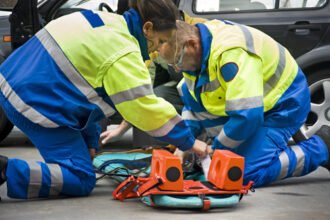USA Today has a full page article on the rise of heroin addiction in the suburbs, but adds absolutely nothing to what’s already widely known.
USA Today has a full page article on the rise of heroin addiction in the suburbs, but adds absolutely nothing to what’s already widely known. (See, for example, my post on the topic from early 2012.) Teens and adults start by abusing the painkiller oxycontin, which is available by prescription, then turn to shooting heroin once they figure out how pricey it is to acquire oxycontin on the street.
The article presents no real ideas on what to do about the problem. If anything the article implies that it would be better to make oxycontin more widely available in order to stem the use of heroin. That’s a nonsensical approach as far as I’m concerned.
There are alternative approaches that might be more promising.
One idea is to establish better guidelines on the prescribing of painkillers after surgery. Many patients –maybe you’ve been one of them– receive an overly generous supply of oxycontin or vicodin after a minor surgical or dental procedure. Sometimes the patient gets addicted from that initial supply, other times the extras end up in the family medicine cabinet where teens might find them and try them out. It’s not always obvious how to dispose of these medications, which contributes to them hanging around.
One hurdle to overcome is that follow-up visits are inconvenient and also not very profitable for doctors. Perhaps if there were quality measures associated with good practices that would change the equation and tighten the initial supply.
Another issue relates to so-called “drug seekers.” We’ve all heard about drug seeking patients who come to the emergency room to get drugs. There are IT systems coming online that can at least identify such drug seekers and alert doctors, but this only works if the systems are consulted, which may not happen when middle-class patients are involved. It’s easy to label patients as “drug seekers,” which makes them sound like bad people. Some are. But many others are patients who are somewhere down the path toward dependency. They’re not trying to become oxycontin addicts and certainly aren’t looking to move to heroin. Rather than turning people away it would be better to have a path to refer these patients into treatment and then to track their progress.
There are great opportunities for physicians, payers, employers, consumers and pain management experts to work together to develop a more comprehensive view of the problem, to develop a strategy to address it, create new quality and safety measures related to achieving the strategy, and align incentives so that physicians are rewarded for doing the right thing.
We won’t solve the problem of painkiller abuse in one shot. But it’s reasonable to start by tightening up on the relatively easy places, such as cutting down on the distribution of unneeded post-surgical pain meds and figuring out how to better direct “drug seekers.”
image:drugabuse/shutterstock







